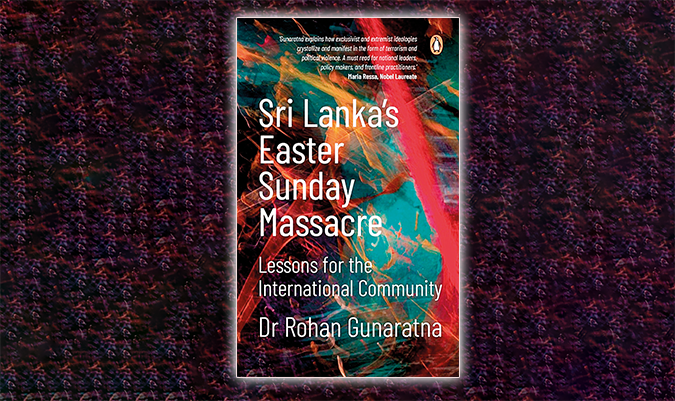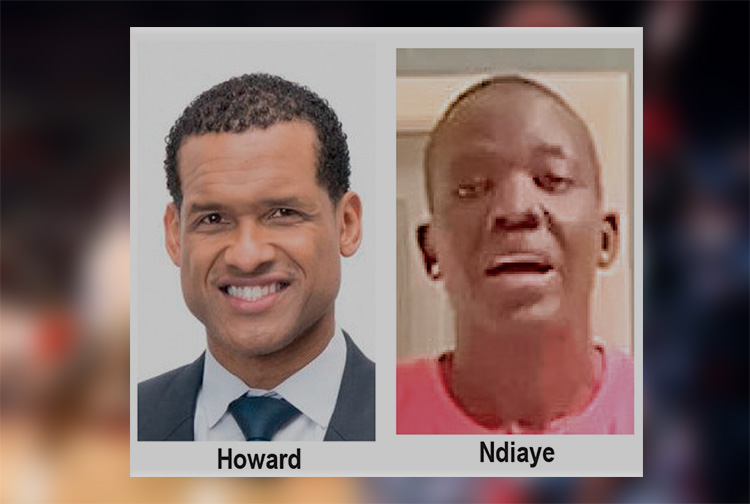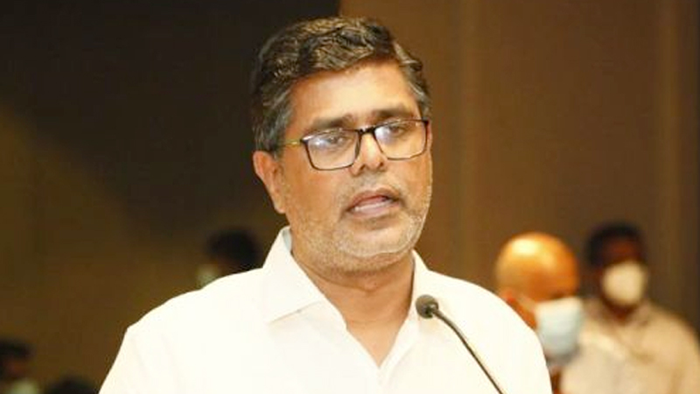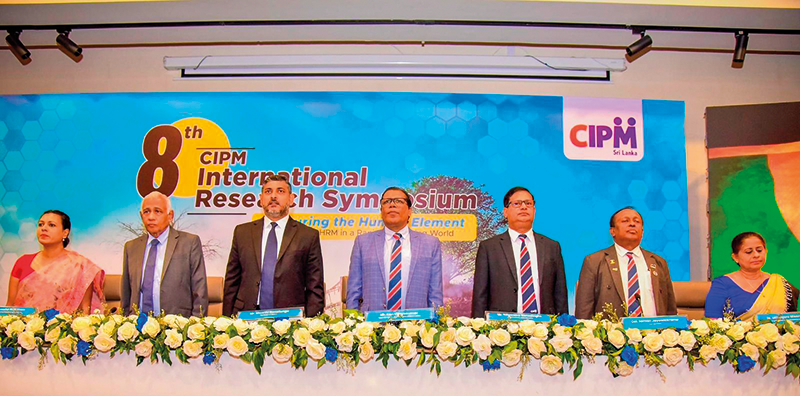News
Review of Rohan Gunaratna’s ” Sri Lanka’s Easter Sunday Massacre: Lessons for the International Community

Dr Punsara Amarasinghe
On April 21, 2019, Sri Lanka had its very first experience from Islamic extremist terrorism through a series of “Easter Day attacks”, targeting Catholic churches and tourist hotels. The impacts created by these attacks pushed the country to a deeper crisis and it further unveiled the sheer failure of the national intelligence agencies of Sri Lanka. Rohan Gunaratna’s timely work is a valuable contribution to the scholarship discussing the intelligence perspective of Sri Lanka’s tragedy.
The book begins with a chart of some crucial events that paved the path for the Easter Sunday massacre and this introductory chapter remains insightful in providing a clear analysis in the brief history of the Islamic radicalism in Sri Lanka, which was not adequately addressed by the government. While unfolding those events, Gunaratna reveals the ideological impetus behind the attacks. In his own words, ” Zaharan and his gang were not normal criminals”.
The first chapter of the book is like a thriller movie on Netflix with the lucid language that Gunaratna uses in tracing every single event of the Easter attacks from the preparation to the execution moment. Even tiny details such as the names of the restaurants where the attackers gathered and consumed food before embarking on the carnage have been included in the first chapter as a part of fiction. However, presenting all those facts does not undermine the central objective of the book; “the lesson for the international community”.
All the details discussed in the first chapter help in analysing the loopholes and utter negligence that paved the path for the attacks. Also Gunaratna reiterates how attacks could have been nipped in the bud, when the large number of explosives were found in Wanathavilluwa in 2019 January.
After describing the anatomy of the attacks in the first chapter, the following chapter provides useful details on Zahran, the mastermind behind the attacks. It should be noted, that the details provided here regarding the character are not mere a biographic sketch of a dead terrorist. Rather, it’s an astute analysis revealing what made an extremist identifying the ideological pillars that hardened Zahran’s resolve.
In particular, Gunaratna pays attention to Zahran’s impoverished childhood. The focal point of the chapter lies in discussing how Zahran’s native village, Kattankudy, in the Eastern province transformed into a hub of Islamic extremism by the influx of Salafi-Wahhabism, which subdued Sufi Islamic traditions and became the dominant discourse that inspired Zahran to choose his path to extremism.
In the first half of the chapter, Gunaratna identifies two major factors that played a decisive role in shaping Zahran’s psyche. The first was the establishment of Centre for Islamic Guidance ( CIG ) under Saudi patronage, which later evolved into the main manufacturing bastion of Wahabi ideology in the Eastern province. Secondly, Gunaratna explains how South Indian Wahabi cleric P.J. left an indelible influence upon the Muslim youth in Sri Lanka, which attracted young Zahran to develop his extremist ideology. Arguably the most violent strain of Salafi-Wahhabism, the doctrine of Tawheed ” The Oneness of God “, took root in Sri Lanka at the turn of the century.
In his vivid analysis, as an expert of intelligence and terrorism Gunaratna explains how all the warnings given by the state intelligence services in Sri Lanka were neglected by the political apparatus for short term political gain, resulting in the robust development of Islamic radicalism in Sri Lanka.
The third chapter entitled “The Colombo Team of the IS Sri Lanka branch”, discusses the genesis of the threat that led to the Easter attacks and also the chapter provides some details on the establishment of the IS in Sri Lanka, in which its followers were eager to emulate the IS practice of killing non-believers. While unveiling the evolution of IS ideology in Sri Lanka, Gunaratna points out how IS ideology became an alluring discourse for the English-speaking educated Muslim youth in the Western province of Sri Lanka through social media.
The chapter further elaborates on the role of Aadhil AX, a Sri Lankan Muslim youth as the main propagandist of ISIS in Sri Lanka and his charismatic leadership in attracting many Muslim youths in Sri Lanka and India to support IS activities in South Asia. According to Gunaratna, the global and local incidents that occurred in the year 2014 accelerated the growth of ISIS ideology in Sri Lanka. The religious riots that took place in Aluthgama between the Sinhalese and Muslims have been described by Gunaratna as a catalyst that nourished the seeds of IS ideology in the island.
Eventually, the IS ideology in Sri Lanka spread through an intricate network comprising friends and colleagues, family and relatives, worshippers at the mosques run by sects and mentors and their disciples. But none of those developments was scrutinized by the intelligence or the other security authorities and it further bolstered the rise of Islamic radicalism in Sri Lanka. The chapter clearly traces the initial plans of the IS activists in Sri Lanka such as the plot to assassinate Galagoda Aththe Gnanasara Thero, the leader of right wing Sinhalese Buddhist organization prior to launching the Easter attacks in 2019.
The last chapter is an eye-opener for the intelligence experts on the need to organize and fortify the intelligence networks to cope with terrorism. Gunaratna shows how intelligence gathering and reports were continuously neglected by the newly elected government in 2015 based on political motives. He seems to be optimistic in his conclusion as he suggests that the international community should work together to dismantle operational and ideological threats. This book by Prof Rohan Gunaratna is a useful contribution to the security and intelligence studies literature.
(The reviewer is a Post-Doctoral researcher at the Institute of Law, Politics and Development at Scuola Superiore Sant Anna, Pisa)
News
US sports envoys to Lanka to champion youth development

The U.S. Embassy in Colombo welcomed the U.S. Sports Envoys to Sri Lanka, former National Basketball Association (NBA) and Women’s National Basketball Association (WNBA) players Stephen Howard and Astou Ndiaye, from June 8 through 14.
The Public Diplomacy section of the U.S. Embassy said that it would launch a weeklong basketball program intended to harness the unifying power of sports, made possible through collaboration with Foundation of Goodness and IImpact Hoop Lab.
While in Sri Lanka, Howard and Ndiaye, both retired professional basketball players, will conduct a weeklong program, Hoops for Hope: Bridging Borders through Basketball. The Sports Envoys will lead basketball clinics and exhibition matches and engage in leadership sessions in Colombo and Southern Province for youth aged 14-18 from Northern, Uva, Eastern and Western Provinces, offering skills and leadership training both on and off the court. The U.S. Envoys will also share their expertise with the Sri Lanka Basketball Federation, national coaches, and players, furthering the development of basketball in the country. Beyond the clinics, they will collaborate with Sri Lankan schoolchildren to take part in a community service project in the Colombo area.
“We are so proud to welcome Stephen and Astou as our Sports Envoys to Sri Lanka, to build on the strong people-to-people connections between the United States and Sri Lanka,” said U.S. Ambassador Julie Chung. “The lessons that will be shared by our Sports Envoys – communication, teamwork, resilience, inclusion, and conflict resolution – are essential for leadership development, community building, equality, and peace. The U.S. Sports Envoy program is a testament to our belief that sports can be a powerful tool in promoting peace and unity.”
News
Rahuman questions sudden cancellation of leave of CEB employees

SJB Colombo District MP Mujibur Rahuman in parliament demanded to know from the government the reasons for CEB suspending the leave of all its employees until further notice from Thursday.
MP Rahuman said that the CEB has got an acting General Manager anew and the latter yesterday morning issued a circular suspending leave of all CEB employees with immediate effect until further notice.
“We demand that Minister Kanchana Wijesekera should explain this to the House. This circular was issued while this debate on the new Electricity Amendment Bill was pending. There are many who oppose this Bill. The Minister must tell parliament the reason for the urge to cancel the leave of CEB employees,” the MP said.However, Speaker Mahinda Yapa Abeywardena prevented Minister Wijesekera responding to the query and said that the matter raised by MP Rahuman was not relevant.
News
CIPM successfully concludes 8th Annual Symposium

The Chartered Institute of Personnel Management (CIPM) successfully concluded the 8th Annual CIPM Symposium, which took place on 31st May 2024. Themed “Nurturing the Human Element—Redefining HRM in a Rapidly Changing World,” the symposium underscored the pivotal role of human resource management (HRM) in today’s dynamic global landscape. Since its inception in 1959, CIPM has been dedicated to advancing the HR profession through education, professional development, and advocacy, solidifying its position as Sri Lanka’s leading professional body for HRM.
Ken Vijayakumar, the President of the CIPM, graced the occasion as the chief guest. The symposium commenced with the welcome address by the Chairperson, Prof. Arosha Adikaram, followed by the Web Launch of the Symposium Proceedings and Abstract Book by the CIPM President. The event featured distinguished addresses, including a speech by Chief Guest Ken Vijayakumar, President of CIPM, and an address by Guest of Honor Shakthi Ranatunga, Chief Operating Officer of MAS Holdings Pvt. Ltd., Sri Lanka.
The symposium also featured an inspiring keynote address by Prof. Mario Fernando, Professor of Management and Director of the Centre for Cross Cultural Management (CCCM) at the University of Wollongong, Australia.
Vote of Thanks of the inauguration session was delivered by Dr. Dillanjani Weeratunga, Symposium Co-chair.
The symposium served as a comprehensive platform for researchers to present their findings across a wide range of critical topics in HRM. These included Cultural Diversity and Inclusion, Talent Development and Retention, Ethical Leadership and Corporate Social Responsibility, Adapting to Technological Advancements, Mental Health and Well-being at Work, Global Workforce Challenges, Employee Empowerment, and Reskilling and Upskilling.
The plenary session was led by Prof. Wasantha Rajapakse. Certificates were awarded to the best paper presenters during the valedictory session, followed by a vote of thanks delivered by Kamani Perera, Manager of Research and Development.
The annual symposium of CIPM was a truly inclusive event, attracting a diverse audience that spanned undergraduates, graduates, working professionals, research scholars and lecturers. This widespread interest highlights the symposium’s significance in the field of HRM, offering a unique opportunity for everyone to network and learn from scholarly brains.The CIPM International Research Symposium was sponsored by Hambantota International Port, Sri Lanka Institute of Information Technology (SLIIT), E B Creasy & Co. PLC, and Print Xcel Company.












